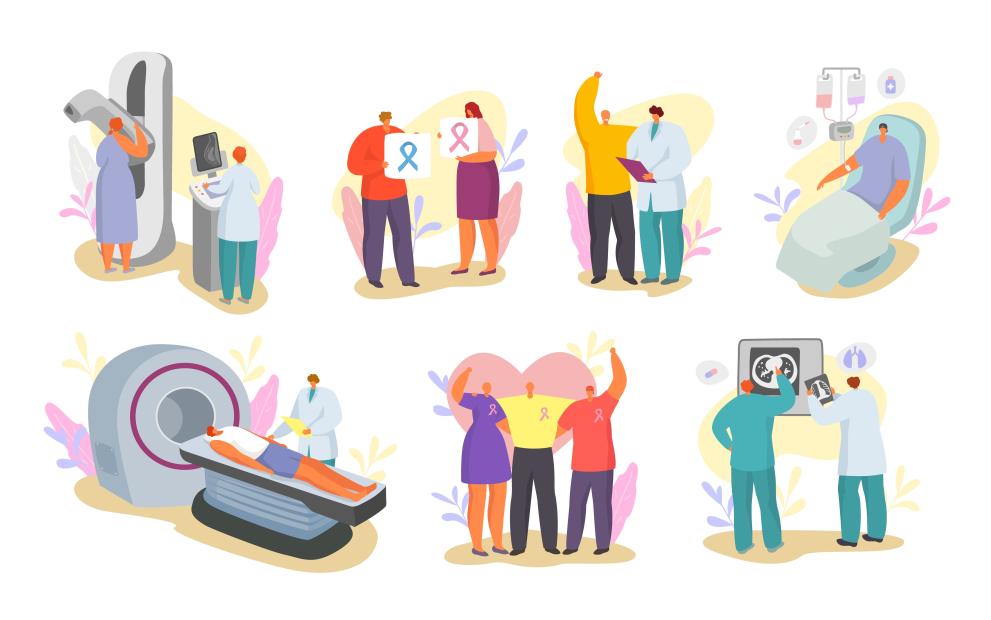
A new study published today in the Lancet Oncology presents the cancer prevalence estimates for 2020, by country, in Europe. This new set of data, hosted in the European Cancer Information System (ECIS) of the European Commission, is one of the outcomes of the EUROCARE-6 study.
In 2020, 5% of the resident population in European countries was estimated to have had a cancer diagnosis in their lifetime.
In the 29 European countries contributing to the study, an estimated 23.7 million people have ever faced a cancer diagnosis in their lifetime, out of 477.9 million inhabitants. The share remains the same when considering the EU-27 area, with 22.3 million prevalent estimated cases out of 447.3 million residents.
Cancer prevalence includes all people who have ever been diagnosed with the disease, regardless of the time lap since diagnosis, whether they are still under treatment or cured.
Demographic, geographical and temporal differences
Most cancer survivors in Europe are over 65 years old. Cancer prevalence differs remarkably between countries (from 2 to 10 times depending on cancer type), consistently with the country’s demographic structure, incidence and survival patterns. The distribution of major risk factors across countries, screening programmes, different levels of diagnostic intensity and possible overdiagnosis all contribute to the geographical variations of prevalence.
Between 2010 and 2020, the number of people who are living with cancer increased by 3.5% per year (+41% overall), partly due to an ageing population.
Population ageing remains a driving factor in the increasing burden of cancer, as also reported by ECIS long-term estimates up to 2040.
The JRC recently assessed the influence of the ageing population on the cancer burden by 2040, assuming that incidence and mortality levels estimated for 2022 remain stable in the next decades. It shows that new cancer diagnoses are expected to increase by about 18%, and cancer deaths by 26% by 2040.
Leading prevalent cancer types
Breast and prostate cancers are the most commonly diagnosed cancers and account for 40% of cancer survivors in women and men, respectively.
Colorectal cancer is the second most common tumour in both sexes, with a higher prevalence proportion in men (691 vs 564 per 100,000).
For women, uterine and ovarian cancers (1.95 million), skin melanoma (779,000), thyroid cancer (734,000) and non-Hodgkin lymphomas (434,000) account for roughly 30% of survivors. For men, a similar percentage of survivors corresponds to diagnoses of urinary bladder (1.03 million) and kidney cancers (595,000), skin melanoma (612,000), lung (519,000) and testicular cancers (493,000).
Why are these cancer estimates key for policymakers?
Cancer prevalence estimates, along with cancer incidence, mortality and survival, allow quantifying, exploring and anticipating the European cancer burden, which is the core aim of the European Cancer Information System.
These data can help policymakers to allocate resources effectively in areas where it is more needed. Understanding how cancer burden will evolve in our societies will help to plan healthcare investments, in terms of personnel, infrastructures and facilities. These estimates can also help them to better organise and implement preventive measures including nutrition and lifestyle practices, vaccination programmes and increasing the uptake of population-based cancer screening programmes.
Background
The European Cancer Information System is part of the Knowledge Centre on Cancer, a flagship initiative of Europe’s Beating Cancer Plan. With a budget of €4 billion, the Plan addresses cancer in an integrated, health-in-all-policies and multi-stakeholder approach.
By supporting the uptake of accurate and up-to-date knowledge about cancer, the Knowledge Centre also contributes to the Horizon Europe Mission on Cancer to achieve by 2030, more than 3 million lives saved, living longer and better.
The JRC works with the European Network of Cancer Registries, the International Agency for Research on Cancer (IARC), EUROCARE and other international institutions and projects to provide the latest information on indicators that quantify cancer burden across Europe.
Indicators include annual cancer estimates covering forty countries, including all EU Member States. The aim is to support research and public health decision-making, as well as being an information source for European citizens.
Sources
Details
- Publication date
- 31 January 2024
- Author
- Joint Research Centre




